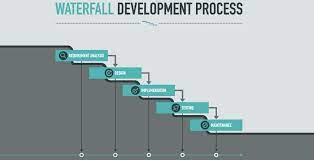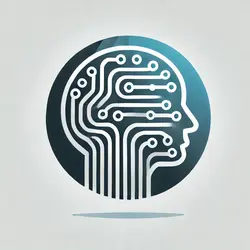
The Waterfall Software Development Model: A Sequential Approach to Project Management
In the realm of software development, the Waterfall model stands as one of the oldest and most traditional methodologies for managing projects. Originating from more structured industries like manufacturing and construction, the Waterfall approach follows a linear and sequential path to software development, with each phase flowing downwards like a waterfall.
Phases of the Waterfall Model
The Waterfall model typically consists of distinct phases that must be completed in a sequential order:
- Requirements Gathering: The initial phase involves gathering and documenting all project requirements from stakeholders.
- System Design: Once requirements are clear, the system architecture and design are planned in detail.
- Implementation: This phase involves coding, testing, and integrating various components to create the software product.
- Testing: The developed software is thoroughly tested for bugs and issues to ensure quality.
- Deployment: After successful testing, the software is deployed to users or customers for actual use.
- Maintenance: Ongoing maintenance and support are provided post-deployment for any necessary updates or fixes.
Advantages of the Waterfall Model
- Clarity: Clear documentation and defined stages provide a structured approach to development.
- Predictability: Progress can be easily measured as each phase has specific deliverables.
- Ease of Management: Project management becomes more straightforward with well-defined milestones.
Criticism of the Waterfall Model
While the Waterfall model offers structure and predictability, it has faced criticism for its rigidity and lack of flexibility. Some common drawbacks include:
- No Room for Changes: Once a phase is completed, going back to make changes can be challenging and costly.
- Risk of Late Feedback: Stakeholders may not see the product until late stages, leading to potential misunderstandings or unmet expectations.
- Inflexibility in Requirements Gathering: Changing requirements mid-project can disrupt the entire process due to its linear nature.
In conclusion, while the Waterfall model has been a foundational approach in software development for decades, it may not always be suitable for rapidly changing or complex projects. Understanding its principles and limitations can help teams make informed decisions on choosing the right methodology for their specific needs.
Understanding the Waterfall Software Development Model: Key Phases, Advantages, Limitations, and Its Comparison with Agile
- What is the Waterfall software development model?
- What are the key phases of the Waterfall model?
- What are the advantages of using the Waterfall model in software development?
- What are the disadvantages or limitations of the Waterfall model?
- How does the Waterfall model differ from Agile methodology?
- Is it possible to combine elements of Waterfall and Agile approaches in a project?
What is the Waterfall software development model?
The Waterfall software development model is a sequential approach to project management that follows a linear progression of phases, resembling a waterfall flowing downwards. In this traditional methodology, each phase must be completed before moving on to the next, starting with requirements gathering, followed by system design, implementation, testing, deployment, and maintenance. This structured model provides clarity and predictability in software development but has been criticised for its rigidity and lack of flexibility when it comes to accommodating changes during the development process.
What are the key phases of the Waterfall model?
In the Waterfall software development model, the key phases follow a sequential order that includes requirements gathering, system design, implementation, testing, deployment, and maintenance. Each phase represents a distinct stage in the project lifecycle, with clear objectives and deliverables to be achieved before progressing to the next. This structured approach aims to ensure that requirements are well-defined at the beginning of the project and that each subsequent phase builds upon the work completed in the previous stages.
What are the advantages of using the Waterfall model in software development?
When considering the advantages of using the Waterfall model in software development, one key benefit is the clarity it provides through its structured and sequential approach. The methodical nature of the Waterfall model allows for clear documentation of requirements and well-defined stages, making it easier to track progress and ensure that each phase is completed before moving on to the next. This predictability not only aids in project management but also helps stakeholders understand the development process more effectively. Additionally, the Waterfall model’s linear progression can offer a sense of control and ease in managing projects, as milestones are clearly delineated, contributing to a more organised and systematic development process overall.
What are the disadvantages or limitations of the Waterfall model?
When considering the disadvantages or limitations of the Waterfall model in software development, several key points come to light. One significant drawback is the model’s inherent inflexibility when it comes to accommodating changes in project requirements. Once a phase is completed, going back to make alterations can be challenging and costly, potentially leading to delays and increased project complexity. Additionally, the linear nature of the Waterfall model can result in late feedback from stakeholders, as they may not see the product until later stages, increasing the risk of misunderstandings or unmet expectations. This lack of adaptability and potential for misalignment with evolving project needs are crucial factors to consider when evaluating the suitability of the Waterfall model for a particular development endeavour.
How does the Waterfall model differ from Agile methodology?
The Waterfall model and Agile methodology represent two distinct approaches to software development. In the Waterfall model, the process follows a linear and sequential path, where each phase must be completed before moving on to the next. On the other hand, Agile methodology is iterative and flexible, allowing for incremental development and frequent collaboration with stakeholders. Unlike Waterfall, Agile embraces changes in requirements even late in the development cycle, promoting adaptability and continuous improvement. While Waterfall offers predictability through its structured stages, Agile focuses on delivering value quickly and responding to feedback promptly. The key difference lies in their fundamental philosophies: Waterfall prioritises thorough planning upfront, while Agile values responsiveness to change throughout the project lifecycle.
Is it possible to combine elements of Waterfall and Agile approaches in a project?
Combining elements of the Waterfall and Agile approaches in a project is indeed possible and can be beneficial in certain scenarios. This hybrid approach, often referred to as “Agile-Waterfall hybrid,” allows teams to leverage the structured planning and documentation of the Waterfall model alongside the flexibility and iterative nature of Agile methodologies. By incorporating elements such as incremental development, regular feedback loops, and adaptive planning from Agile into a predominantly Waterfall project framework, teams can potentially enhance collaboration, adaptability, and responsiveness to changing requirements while still maintaining a degree of predictability and control over project milestones. The key lies in understanding the unique needs of the project and finding a balance that best suits the team’s goals and constraints.
